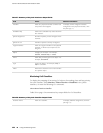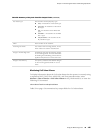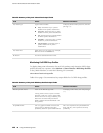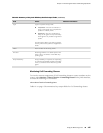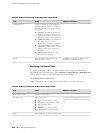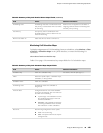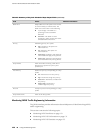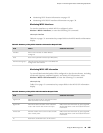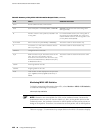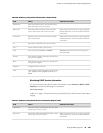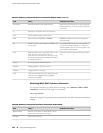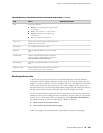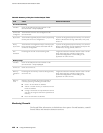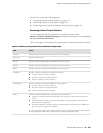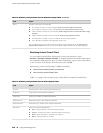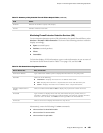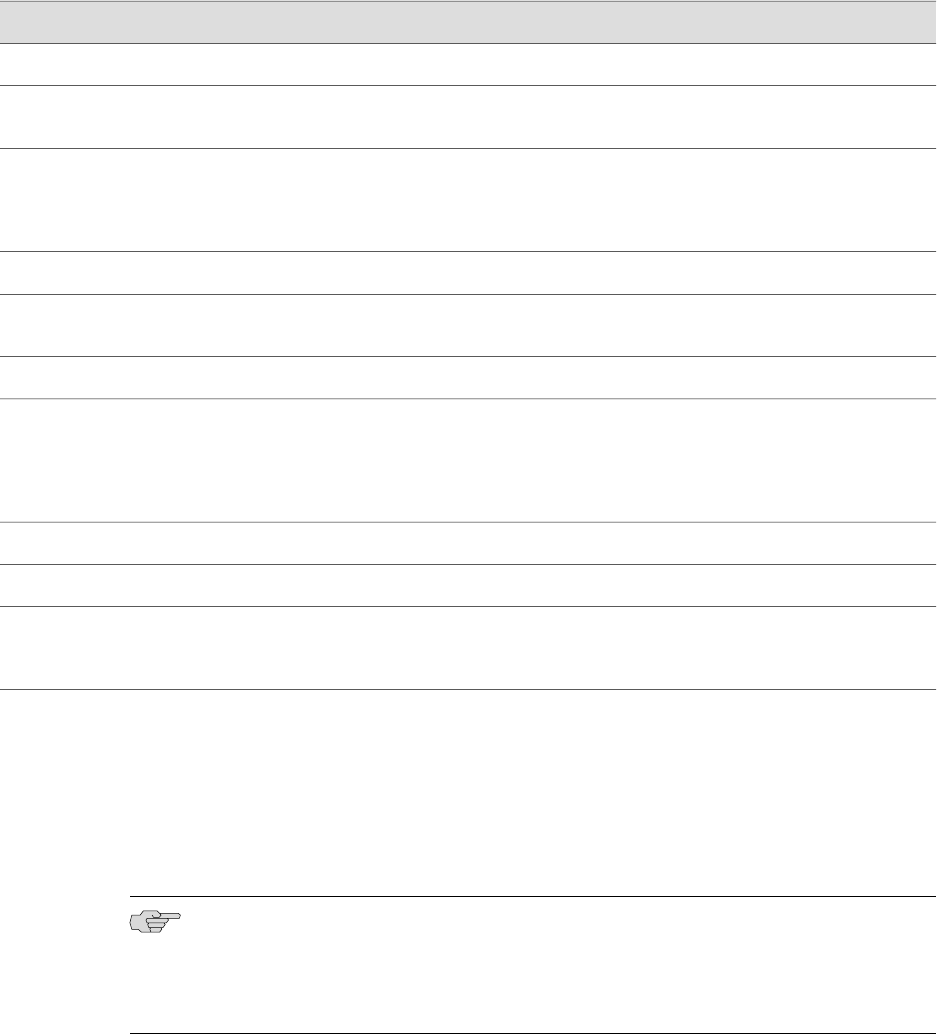
Table 65: Summary of Key MPLS LSP Information Output Fields (continued)
Additional InformationValuesField
Source (inbound router) of the session.From
AdminDn indicates that the LSP is being taken
down gracefully.
State of the path. It can be Up, Down, or AdminDn.
State
For inbound RSVP sessions, the routing table is
the primary IPv4 table (inet.0). For transit and
outbound RSVP sessions, the routing table is the
primary MPLS table (mpls.0).
Number of active routes (prefixes) installed in the
routing table.
Rt
This field is used for inbound LSPs only.
Name of the active path: Primary or Secondary.
Active Path
This field is used for inbound LSPs only.An asterisk (*) in this column indicates that the
LSP is a primary path.
P
Configured name of the LSP.LSPname
This field is used for outbound and transit LSPs
only.
RSVP reservation style. This field consists of two
parts. The first is the number of active
reservations. The second is the reservation style,
which can be FF (fixed filter), SE (shared explicit),
or WF (wildcard filter).
Style
Incoming label for this LSP.Labelin
Outgoing label for this LSP.Labelout
Total number of LSPs displayed for the particular
type—ingress (inbound), egress (outbound), or
transit.
Total
Monitoring MPLS LSP Statistics
To display accounting information about LSPs, select Monitor>MPLS>LSP Statistics,
or enter the following CLI command:
show mpls lsp statistics
NOTE: \Statistics are not available for LSPs on the outbound router, because the
penultimate router in the LSP sets the label to 0. Also, as the packet arrives at the
outbound router, the hardware removes its MPLS header and the packet reverts to
being an IPv4 packet. Therefore, it is counted as an IPv4 packet, not an MPLS packet.
Table 66 on page 133 summarizes key output fields in the MPLS LSP statistics display.
132 ■ Using the Monitoring Tools
J-series™ Services Router Administration Guide



